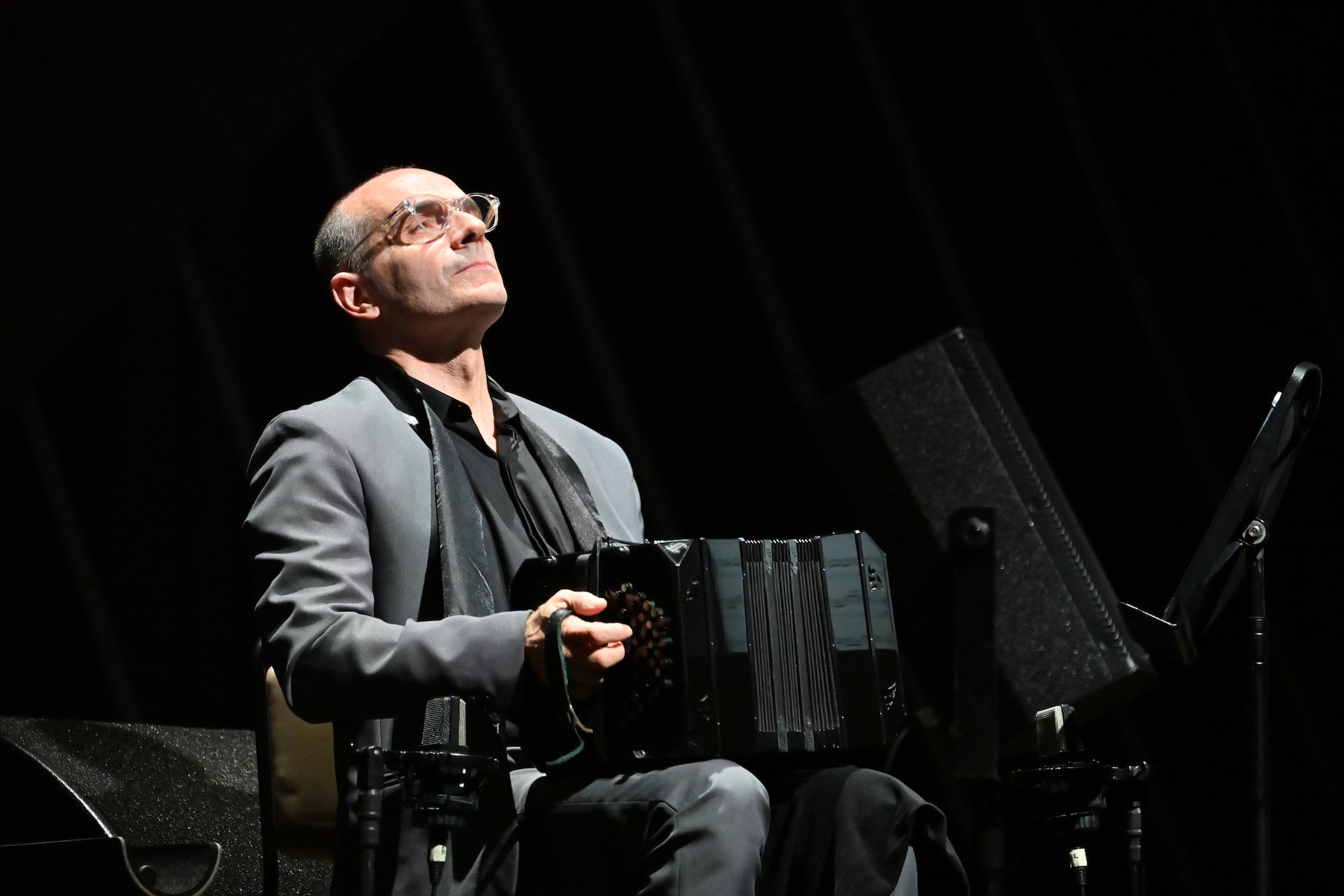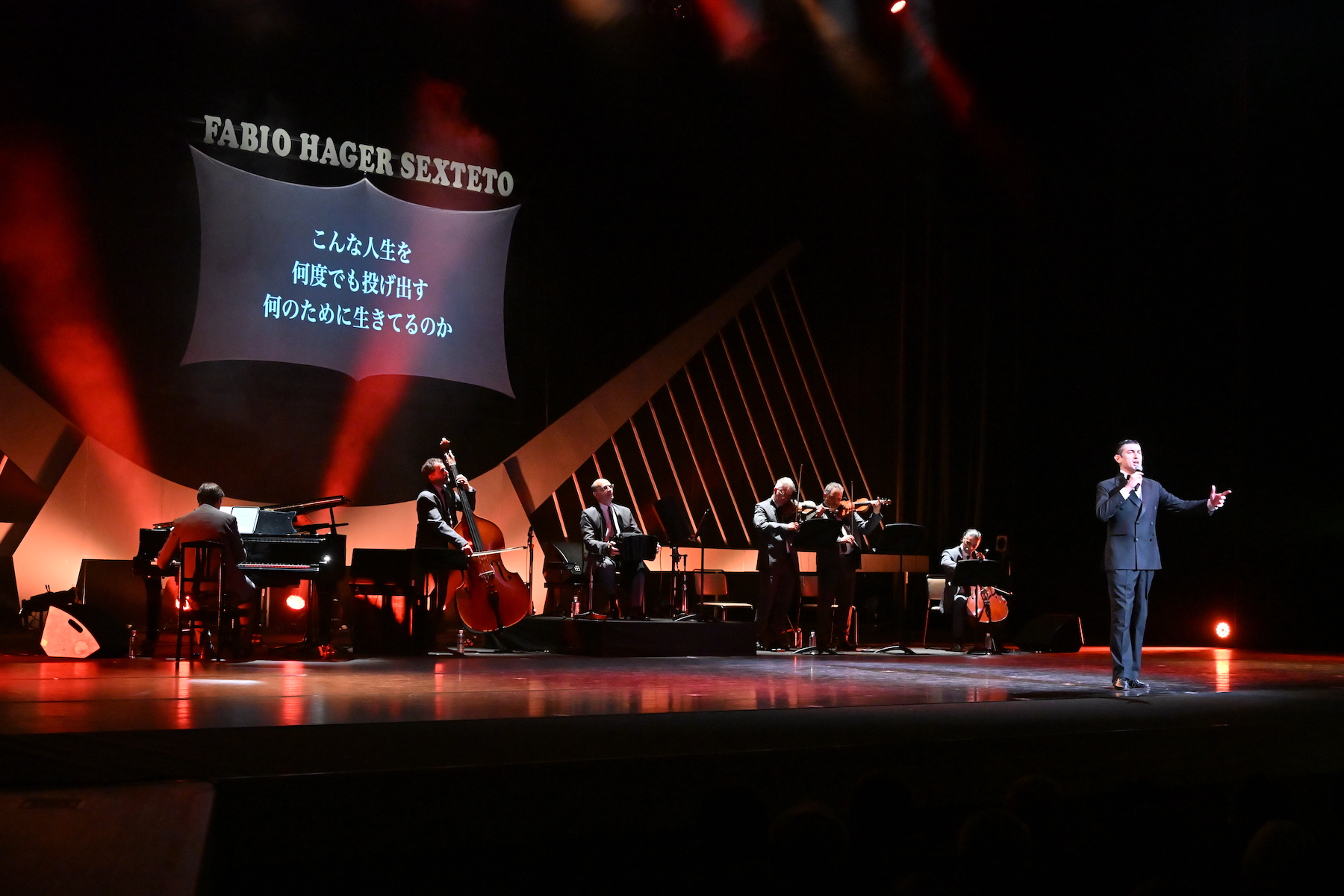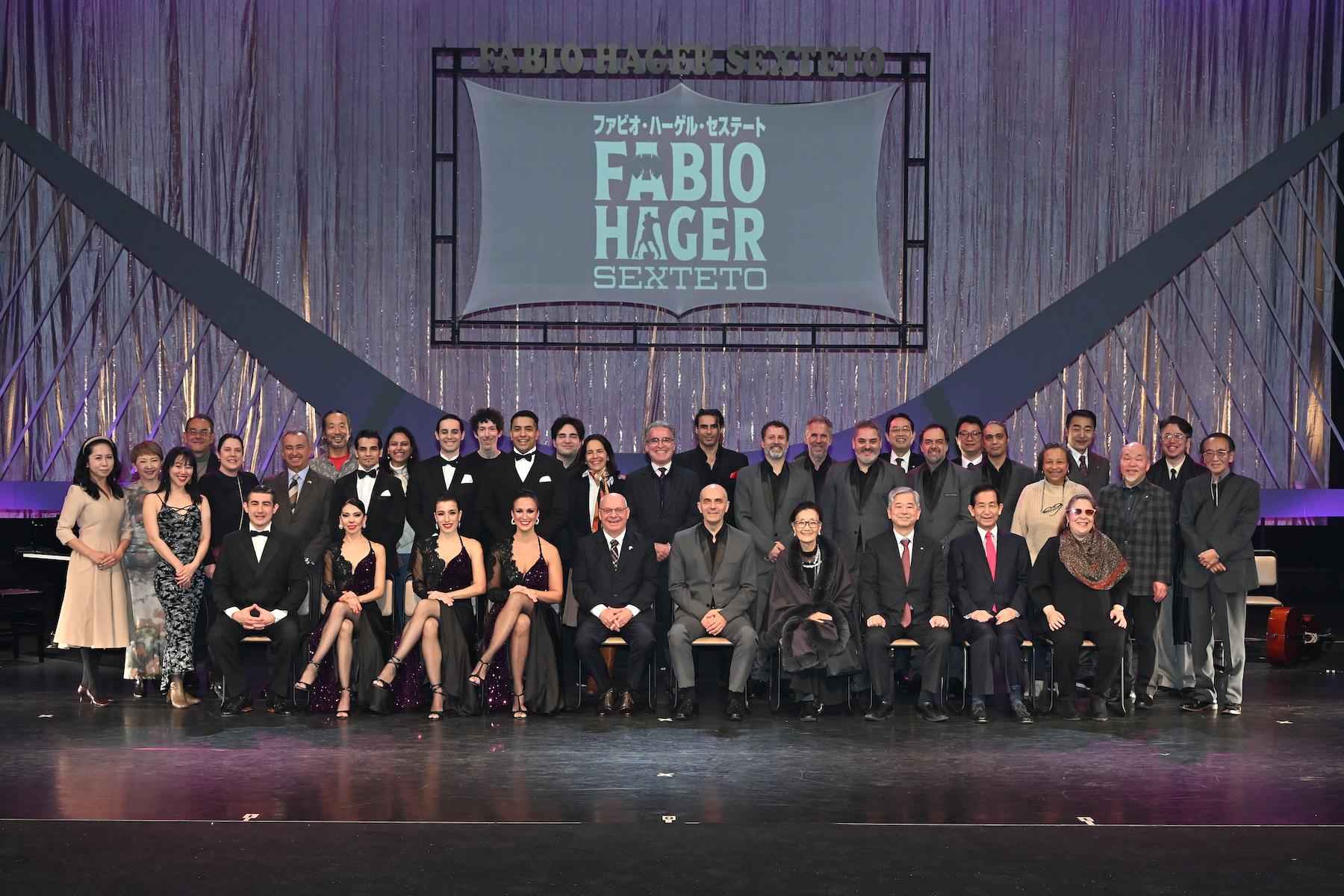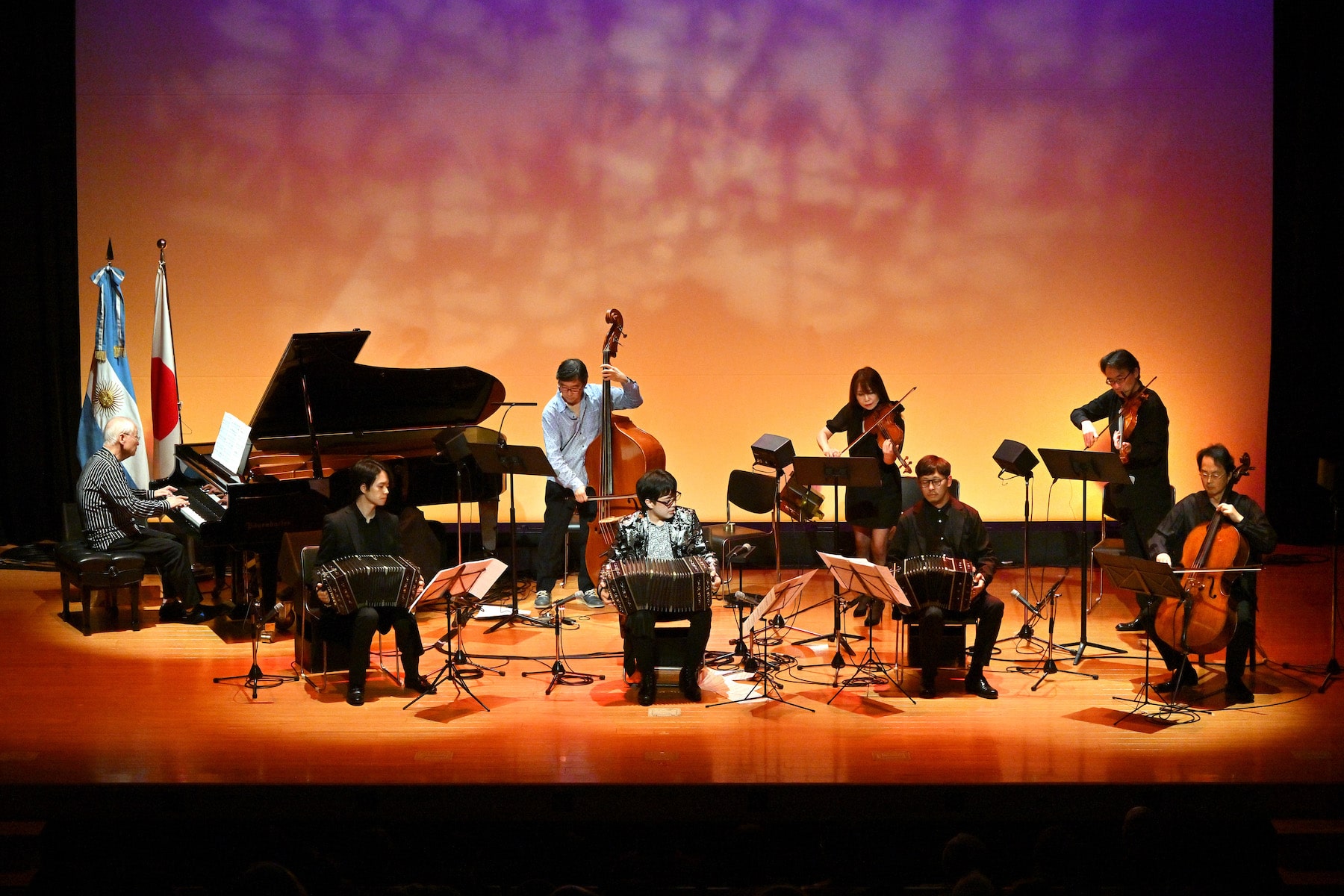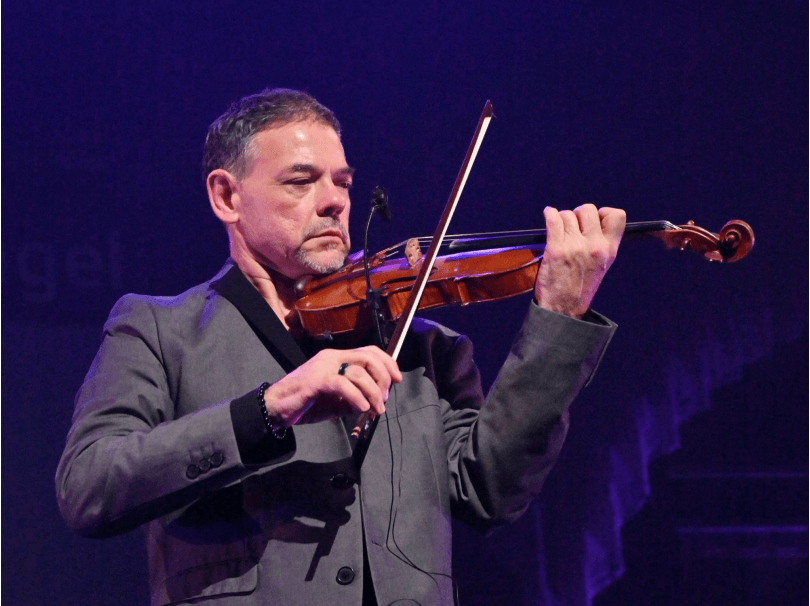“Tango for me is emotion itself!”
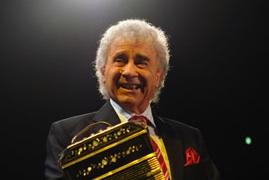
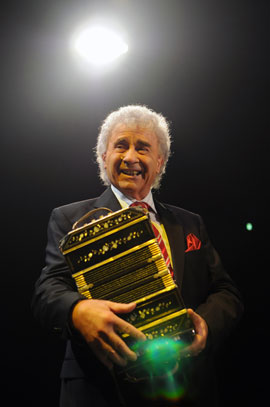 Roberto Alvarez onstage with his bandoneón
Roberto Alvarez onstage with his bandoneónRoberto Alvarez was born in 1940 in Buenos Aires, the birthplace of tango. From the age of fourteen, he studied music theory with Maestro Hector Marseletti. In 1978, he was invited to join the Orquesta Osvaldo Pugliese. While contributing his skill as an excellent arranger, he also kept his position as first bandoneón player. After eleven years with the orchestra, the virtuoso bandoneón player Roberto Alvarez decided to start his own orchestra with other musicians, keeping alive Pugliese’s style and spirit. That is how the Orquesta Color Tango was born two decades ago in 1989 as the legitimate successor to the legendary Maestro Osvaldo Pugliese’s orchestra.
Min-On: First, please tell us your thoughts about performing with your own orchestra all over Japan.
Alvarez: During this Min-On tour, every venue we’ve played has been filled to capacity, and the encouragement we’ve received from the audiences has been truly warm and sincere. It has been an extremely moving experience in every city throughout Japan. Usually when we perform in other countries, we never know how our audiences will respond, so we are always filled with anxiety. But this time, right from the beginning of the tour, I feel that we’ve pleased everyone here in Japan, and that makes me very happy.
Min-On: From 1978 to 1989, you were a member of the legendary Orquesta Osvaldo Pugliese. You and the late Maestro Pugliese performed on many stages together. What sort of presence was he to you, and to your orchestra of the Color Tango?
Alvarez: Maestro Pugliese changed every aspect of my life. Musically, of course, but he also modeled a magnificent humanity as a man of character in his everyday personal actions. He was loved by everyone, and respected by everyone. In that sense, as an orchestra, our Color Tango endeavors to inherit not only his music but to learn everything from the principles and actions by which he lived his life. He did not call himself an artist, but used the word lavoratore in Italian, to refer to himself. In the city of Buenos Aires, “an ordinary person performing hard labor” is called a laburante, and this is how he referred to himself. The maestro was a truly magnificent musician, a great mentor, but he was always humble. So we endeavor to be as humble as the maestro and work as hard as a lavoratore at the labor of making music. We are said to be Pugliese’s successors, but we are not a finished product yet; I think we’re always in the process of striving to be true successors to our mentor, Maestro Pugliese.
Min-On: During this Japanese tour, you’ve played “Tokio Luminoso,” the piece Maestro Pugliese dedicated to Min-On founder Dr. Ikeda. Could you tell us something about that piece?
Alvarez: This is something I heard directly from Maestro Pugliese. When he traveled to Japan for the Min-On performances, he was so moved, both by the warmth of the Japanese audiences and the magnificent response to the concerts, and by Tokyo’s wonderful glittering night views and dazzling streets, that he created a piece called “Shining Tokyo,” or in other words, “Tokio Luminoso.” When I perform this piece, I always think of it as a homage to my great mentor, Maestro Pugliese, and as a homage to Dr. Ikeda, whom I personally respect as well.
Min-On: This may be a familiar question, but what does tango mean to you?
Alvarez: Tango for me is emotion itself, and its music conveys emotion. Immigrants to Argentina originally created tango music. It was born out of their shared sorrow and pain at wanting to return to their homeland but being unable to do so. It’s a musical culture created by people with no knowledge of music, who listened with their ears and played and danced by intuition, giving expression to pure emotion as they did so. I am very happy to perform my tango as Color Tango for the Min-On Tango Series, and I am deeply grateful for the kindness of the Japanese audiences.


